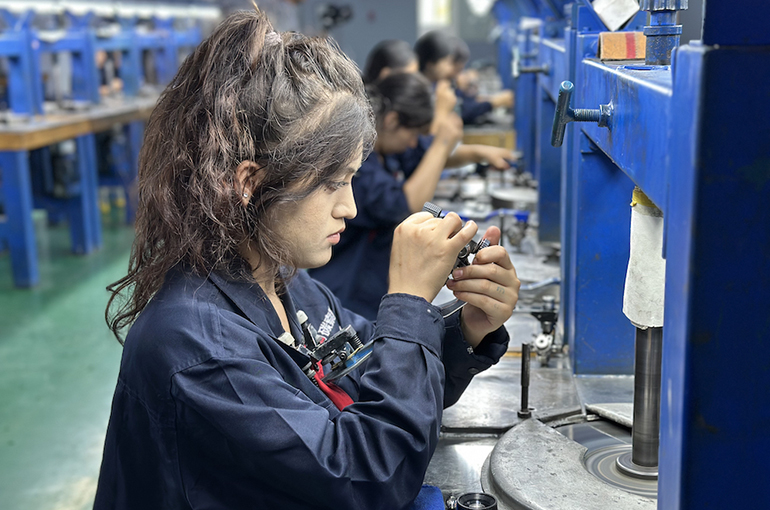 Xinjiang County Becomes Global Synthetic Diamond Hub Thanks to Shanghai-Led Aid Projects
Xinjiang County Becomes Global Synthetic Diamond Hub Thanks to Shanghai-Led Aid Projects(Yicai) Aug. 19 -- Shanghai has helped a local jewelry company open China’s largest lab-grown diamond factory using the high-clarity chemical vapor deposition method in the Xinjiang Uygur Autonomous Region, aiming to make it one of the world’s leading hubs for man-made diamonds.
Zhenzuan Jewelry, backed by a long-standing regional aid program, recently began operations at the plant in Shache using the microwave plasma chemical vapor deposition (MPCVD) method, Yicai learned during an on-site visit.
MPCVD is a cutting-edge global technique for producing large, colorless or nearly colorless lab-grown diamonds with purity levels reaching 99.999 percent. The cost is about one-fifth that of natural diamonds, according to Chen Panfeng, workshop director at project operator CRCMT. In China, MPCVD is increasingly replacing the more common high-pressure high-temperature (HPHT) method for producing higher-purity gems.
CRCMT plans to scale up rapidly. In its second phase, the factory aims to reach an annual capacity of 500,000 carats, representing 15 percent of global supply. This would position Shache among the largest lab-grown diamond hubs in China or even globally, Chen said. The project is expected to create 800 jobs and train 50,000 technical workers over time.
The initiative is part of the decades-long Aid Xinjiang program, also known as the Pairing Assistance initiative, which links developed cities with less-developed counties in Xinjiang to transfer funds, talent, and technology. Shanghai’s assigned partner is Shache, also known as Yarkant.
Last year, Zhenzuan, a member of the Shanghai Diamond Exchange, partnered with Shache’s aid office to establish CRCMT. The factory’s first batch includes nearly 680 diamonds, with an estimated annual output value exceeding CNY1 billion (USD139.3 million), addressing a gap in the region’s high-end materials sector.
Beyond jewelry, the factory includes production lines for ultra-high-purity hydrogen and methane, key inputs for advanced sectors such as semiconductors, aerospace, and aviation. CRCMT aims to become a core supplier to domestic tech giants like Huawei Technologies and Semiconductor Manufacturing International Corporation.
The project is generating local employment. Most of CRCMT’s more than 80 frontline workers are Xinjiang natives. Shache Senior Technical School has trained 300 technicians who earn CNY2,400 (USD334) per month as interns and between CNY4,000 and CNY5,000 as full-time workers -- well above the local average.
Shanghai’s support extends to other industries. Xiaofeng Agriculture, established alongside CRCMT, has formed a collaborative model to create 200 jobs through initiatives like almond processing, raising incomes in 21 villages.
Economic output is also rising in Kashgar Prefecture, where Shache is located. The region’s gross domestic product surged to CNY162.7 billion (USD22.7 billion) last year from CNY36.8 billion in 2010, more than quadrupling, alongside rising urban and rural incomes.
Editor: Emmi Laine